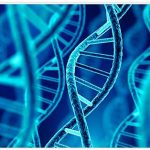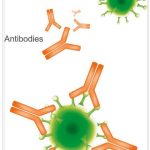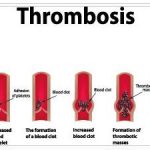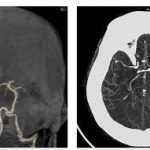Louis-Bar syndrome is an inherited multisystem disease. Almost all organs are affected by the disorders. The life expectancy of those affected is significantly reduced.
What is Louis Bar Syndrome?
According to Nonprofitdictionary, Louis -Bar syndrome is a hereditary systemic disease. This leads to neurological failures, frequent infections and malignant degeneration of various body cells. The disease is very rare, occurring in 1 in 40,000 newborns. As an inherited disease, it is one of the so-called phakomatoses. A group of diseases with skin malformations and nerve damage is summarized under phakomatoses. It is not a uniform group of diseases, but a collective term.
Furthermore, the disease is also counted among the chromosomal break syndromes because it leads to multiple chromosome breaks in the course of the disease. In neurological practice, Louis-Bar syndrome is classified in the group of heteroataxias (inherited ataxias ). Life expectancy is significantly reduced. The syndrome is usually fatal in the third decade of life. However, some patients have also reached a significantly older age. The disease was first described by Belgian doctor Denise Louis-Bar in 1941. For this reason, the syndrome was named after Denise Louis-Bar.
Causes
Louis-Bar syndrome is caused by a defect in the ATM gene on chromosome 11. 400 different mutations have been identified in this gene. It encodes a large nuclear protein found in all cells. The protein is called serine protein kinase ATM and is responsible for detecting DNA damage, especially that related to chromosomal breaks. ATM is responsible for producing DNA repair proteins by sending out appropriate signals.
In addition, it can cause cell death ( apoptosis ) in the event of extensive DNA damage. It also regulates other genes that play a role in cell division. Many neurological and immunological symptoms are due to a misdirected stress response. The syndrome is inherited in an autosomal recessive manner. Heterozygous carriers are healthy, but often have an increased susceptibility to tumor formation. Overall, the pathogenesis of the individual symptoms is not yet fully understood.
Symptoms, Ailments & Signs
Louis-Bar syndrome manifests itself in many different symptoms. After an initially undisturbed development, the first motor disorders in the form of ataxia (unsteady gait) and balance disorders often appear in early childhood. Later, abnormal movements and muscle twitching are added. Furthermore, there is a stooped posture and tremor ( shaking ). Eye movements are also disturbed.
Head and eye movements are no longer coordinated. The ability to speak deteriorates, with speech becoming increasingly slurred. Telangiectasias appear from the third to fifth year of life. These are enlargements of the small arteries in the face and conjunctiva of the eyes and ears. The facial skin tightens, the hair turns gray and other premature signs of aging appear. In addition, foot malpositions or spinal curvatures develop.
Much of the symptoms are related to immune disorders. This leads to frequent infections of the respiratory tract and constant pneumonia. It was found that mainly the immunoglobulins IgA and IgG2, but sometimes also IgG4 and IgE, are missing. In the case of an initially normal mental development, increasing mental degradation takes place from the age of ten. In the course of the second decade of life, the motor problems worsen so much that the young people are dependent on a wheelchair.
During puberty, sexual development is delayed with the development of short stature and hypogonadism. The risk of developing malignant degeneration in the form of lymphomas, leukemias and other carcinomas is between 60 and 300 times higher than in the general population.
Diagnosis & disease progression
A diagnosis of Louis-Bar syndrome is easy to make after the characteristic telangiectasias on the conjunctiva of the eyes have appeared in addition to the motor abnormalities that are already present. The diagnosis is confirmed by the detection of an increased concentration of the alpha-fetoprotein AFP. In the cell cultures, frequent chromosome breaks are particularly noticeable in chromosomes 7 and 14. Magnetic resonance imaging reveals atrophy of the cerebellum.
Complications
The Louis-Bar syndrome leads to a very sharp reduction in life expectancy. The parents or relatives in particular suffer from psychological complaints and depression and therefore need psychological treatment. The patients themselves suffer from muscle twitching and balance disorders.
There is also a limited ability to speak and thus severe limitations in everyday life. The respiratory tract is also clearly affected by Louis-Bar syndrome, so that inflammation and other disorders of the immune system often occur. Furthermore, those affected are affected by short stature and usually also suffer from various cancers.
Whether mental retardation will also result from Louis-Bar syndrome cannot usually be predicted in general. Unfortunately, it is not possible to treat Louis-Bar syndrome causally and causally. For this reason, the treatment takes place exclusively symptomatically and aims to increase the life expectancy of the patient. This requires various interventions and therapies, which, however, are not always successful. In most cases, life expectancy due to Louis-Bar syndrome is limited to around thirty years.
When should you go to the doctor?
If growing children show a delay in development in direct comparison to their peers, the observations should be discussed with a doctor. If there are motor abnormalities, if there are gait uncertainties or difficulties with locomotion, a doctor’s visit is advisable. Imbalances, a hunched posture, problems with the spine or tremors in the limbs should be examined and treated by a doctor. In the case of reduced speech ability, coordination problems with head and eye movements and behavioral problems, the affected person needs medical help.
Problems with breathing, infections, a general feeling of illness and inner weakness should be clarified. If there are any abnormalities in the complexion, unusually tight facial skin or dilation of the arteries in the face, a doctor should be consulted. Misaligned feet are another sign of an irregularity. They should be examined medically so that the cause can be determined and treatment can be initiated.
Without timely care, those affected are at risk of permanent postural damage and other complications that can lead to lifelong consequences and impairments. A doctor’s visit is necessary if the hair on the head turns gray prematurely, a premature deterioration of mental abilities becomes apparent or repeated inflammation of the respiratory tract develops. If pneumonia occurs repeatedly, the observations should be discussed with a doctor.
Treatment & Therapy
The Louis-Bar syndrome cannot be treated causally because it is a hereditary disease. Only symptomatic therapies are possible. This requires constant antibiotic treatment of the frequent infections. Taking vitamins has been shown to be helpful. It is also important to get the usual vaccinations. When vaccinating, however, it should be noted that no live vaccines should be used.
Since there is increased mutability, the use of radiation therapy should be strictly avoided. X-rays should also not be used in diagnostics. Support measures such as ergotherapy and speech therapy should be initiated at an early stage. Physiotherapeutic measures are also necessary. Orthopedic aids can improve mobility.
Furthermore, constant monitoring must take place with regard to the occurrence of malignant tumors. Radiation treatment of leukemia and lymphoma is not possible due to the special sensitivity to radiation. The prognosis of the disease is unfavorable, but can be improved with intensive medical care. As a rule, Louis-Bar syndrome is fatal in the third decade of life. In isolated cases, however, patients have also reached a much older age.
Outlook & Forecast
Louis-Bar syndrome has an unfavorable prognosis. The patient has a genetic disease. There is also an increased susceptibility to the formation of tumors. Legal requirements prohibit intervention and modification of human genetics. Because of this, the cause of the syndrome cannot be eliminated. The patient is bound to regular check-ups for life so that abnormalities and irregularities can be detected as early as possible.
The symptoms and the increased susceptibility to cancer represent a strong emotional burden for the patient. In addition to the development of various types of cancer, a mental disorder can develop. Overall, the life expectancy for sufferers of Louis-Bar syndrome is significantly reduced. In most cases, those affected reach the age of about thirty years. The detailed development depends on the individual characteristics of the individual complaints.
An improved course can be seen in patients who have a healthy lifestyle and pay attention to their mental stability as far as possible. In addition, practices learned to promote quality of life can be applied independently in therapies. This supports mobility and makes it easier to cope with everyday life. The prospect of a reduced life expectancy poses a challenge for those affected and their relatives. Dealing with the disease is therefore not irrelevant for further development.
Prevention
Because Louis Bar Syndrome is a hereditary disease, there are no recommendations for its prevention. However, if there is a family history of this condition, genetic counseling should be sought. A mutation in the ATM gene can be detected during prenatal diagnostics.
Aftercare
Those affected by Louis-Bar syndrome suffer from a number of different complaints and complications, all of which can usually have a very negative effect on the patient’s quality of life. Therefore, follow-up care focuses primarily on managing the imbalances. Those affected suffer from restrictions in movement and are usually dependent on the help of their families in everyday life.
In general, the disease cannot be cured, so aftercare is primarily aimed at containing the symptoms and complications that occur and at ensuring a certain level of quality of life in everyday life. Depending on the severity of the condition, the disease can affect those affected, so it is sometimes advisable to seek professional help from a psychotherapist. Sharing knowledge with other sufferers can also boost self-esteem when dealing with Louis-Bar syndrome.
You can do that yourself
Louis Bar Syndrome is a serious condition that is often fatal. Since caring for a sick child is associated with stress and anxiety, parents of affected children usually need therapeutic support. Many parents also take part in self-help groups or get more information about the disease by visiting a specialist clinic for hereditary diseases.
The sick child usually has to be treated in the hospital. Any accompanying measures are limited to making the child’s stay in hospital as comfortable as possible. This succeeds in that both the relatives and the doctors are available for questions or problems. If the course is positive, it is important to remedy the malformations that have occurred by starting ergotherapy at an early stage. At home, these measures can be supported by individual training. Parents should speak to the responsible physiotherapist or a sports medicine specialist. If speech therapy measures are initiated, parents should primarily look for unusual symptoms.
Close medical controls ensure that any malignant tumors can be identified and treated immediately. The affected children often need psychological help later in life, since life expectancy and quality of life are significantly reduced in Louis-Bar syndrome.








